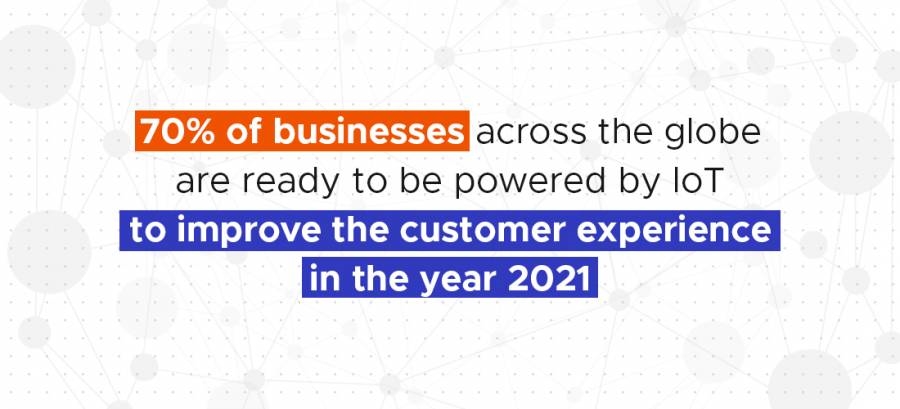Changing E-commerce Landscape: Global Trends for 2019 and Beyond
Changing E-commerce Landscape: Global Trends for 2019 and Beyond
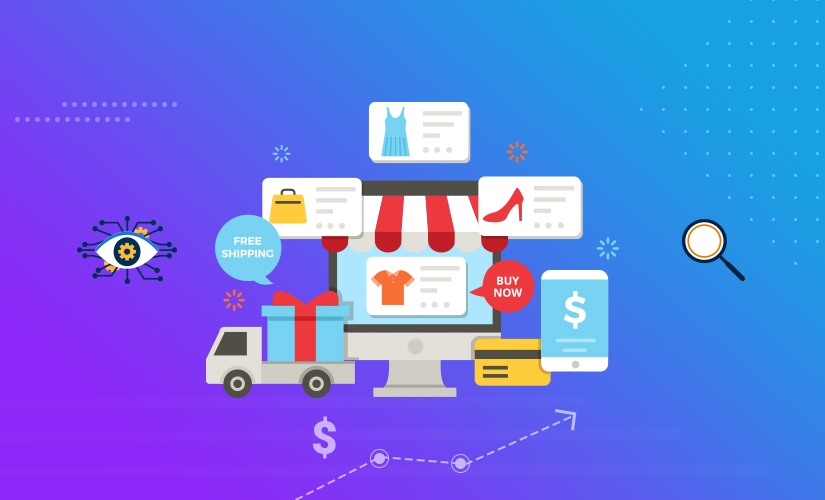
BigCommerce says, 51% of Americans prefer to make a purchase online, and 96% of Americans have made at least one online purchase in their lives.
Just a decade ago, physical stores were the only shopping solutions for customers. Today, with the headway in digital trends, it has become easier for merchants to reach out the tech-savvy customers anytime, anywhere.
For instance, the growth of smartphone users has added to the surge of e-commerce. The screens of these smartphones serve as the doorways to e-commerce stores. Features like mobile shopping, easy payments, great checkout discounts, test-and-try on yourself, free shipping and timely delivery options have quite been useful in convincing the toughest of shoppers (including the millennials) to shop online who once preferred in-store shopping as the most reliable method.
The emergence of new technologies in e-commerce sector has led to the paradigm shifts in recent years. The E-Commerce sales graph has projected a huge amplification until 2019 and is expected to cross a mark of USD 4.878 billion by 2021. The high-tech innovations have transformed the way people shop and the retailers market a product/service.

Source: Data via Statista
Let’s have a sneak peek into,
Shifting E-commerce Trends in 2019 and Beyond
Considering customer as the driver of e-commerce gains, the key to successful e-commerce lies in providing customers with seamless shopping experiences while ensuring that merchants achieve their desired revenue base.
To offer personalized experiences, utilizing automation services, optimizing processes, simplifying decision making, and using data insights to improve operations, e-commerce merchants are investing in adopting new measures for upgrading their e-commerce game.
While maneuvering over the latest e-commerce trends, merchants are also making sure that the chosen technology should be worth their efforts. Here are some common changing e-commerce landscapes that will rule the e-commerce space beyond 2019.
1. The era of Internet Of Things (IoT)
Internet of things is a combination of products, services, and customers. The shifts to IoT is necessary to keep pace with the ever looming expectations and shopping habits of customers. It is stated that by 2021, about 70% of businesses would be using IoT to enhance their customer experiences. So, considering the IOT technology at each stage of the ecommerce business plan becomes inevitable.
Key Takeaways for Merchants:
-
Smart Warehouse Management including Inventory and Supply Chain Management
Smart warehouses make use of IoT enabled smart devices for real-time visibility into operations. The IoT sensors and RFID tags make it easy to streamline inventory management in true-time. Besides, instant monitoring and tracking the inventory, these sensors and tags minimize the chances of any human errors that can occur while handling the goods. This becomes the base for automation that can help you over conventional paper-based methods, excel sheets, or accounting tools.
The RFID tags and GPS technology help you in seamless supply chain management. Besides tracking goods, it helps you in instant monitoring, decision-making, and accurate product management.
Moreover, IOT comes out to be a warehouse management solution. The temperature-monitoring and humidity sensors are used to raise alarms whenever any product in the warehouse exceeds a threshold level of temperature or humidity.
Nowadays, various warehousing options are offered by 3rd party aggregators such as Amazon and eBay that can facilitate merchants in managing the order fulfillment process, streamlining omnichannel business and delivering to all major zip codes across the globe.
E-commerce giant, Amazon is leading the way by adding innovative automation in the process. It is making use of robots in the warehouse to increase the efficiency and accuracy in the picking and packing process. Thus, if you sell in more significant quantity or want to extend your business reach to multiple countries, fulfillment by Amazon services could be the services to look forward to.
-
Providing a personalized customer experience
IoT can help you personalize your e-commerce marketing campaigns to increase visitor engagement, CTRs and revenue while offering an improved experience to the customer. This helps in magnifying the customer and merchant relationship.
By gaining insights from data exchanged amongst IOT devices, e-commerce merchants can attract more customers and sway their buying decisions. Moreover, you can also provide customized solutions to the selected audience to offer a higher value with lesser efforts and delivers a sense that you care for your user’s needs.
-
Parcel delivery via Drones
Soon drone-assisted online parcel deliveries will be done by major e-commerce marketplaces.
E-commerce giant Amazon in 2016 conducted its first prime product delivery via drones. The routine air deliveries through drone could probably start in 2019 or 2020.
Many other e-commerce brands around the globe are planning to test for parcel deliveries with the help of drone-like devices in the future. Currently, scientists are seeking workable measures and counter-measures for challenges like regulatory issues, capital cost, additional human labor costs, children or animals as obstacles, and more. Once they overcome these problems, in a few years you might find your package dropped by unmanned drones that are fully tracked by the sender.
2. Location Independence
Today ecommerce is not location dependent. Where having and maintaining a physical store was limited to selling to a restricted area, ecommerce if managed correctly has an excellent opportunity to attain exponential growth in a very short time-frame. Selling products online allows you to cross geographic boundaries. As content is the medium of communication innovatively presenting a simple product, a robust content strategy plays a significant role in running a successful e-commerce store. Even if you don’t have a team, many online portals are available where you can order content from. One such example is ineedarticles.com, where you need to put keywords and pay for articles based on a total number of words.
A plethora of online platforms exist which help to hire efficient ecommerce writers and provides excellent customer support in the low budget. Platforms like Odesk and Elance can help you get started with your e-commerce venture irrespective of the location.
Key Takeaways for Merchants:
- Cross Border ecommerce
Merchants can now sell internationally by using various techniques. Devising a well-planned marketing strategy can help you expand your businesses to any part of the world. Here are some quick pointers that can help merchants:
- By providing multiple currency pricing and localizing the payment methods to simplify the buying process for customers.
- For better cross border ecommerce, merchants can up multi-sites with each site displaying different language, different or same product line, and different prices based on location
- Merchants can use strategic planning tools such as Ansoff Matrix which can facilitate merchants to have a natural market expansion for their product range. Using this product versus market matrix marketers can analyze their potential growth and the risks that are involved in each strategy.

(i) Market Penetration: This strategy relates to increasing the sale of existing products in the existing market.
(ii) Product Development: Under this strategy, marketers launch new products into an existing market. For example, a prominent china based smartphone brand Xiaomi is focussing on meeting its growing customers’ needs by introducing new products such as smartwatch and power banks.
(iii) Market Development: It relates to launching existing products in a new market. For example, Xiaomi launched its existing smartphone product range in the American market for expansion in a new demographic.
(iv) Diversification: This strategy focuses on launching new products into the new market. The risks involved in this type of e-commerce trend are more. It can be related or unrelated diversification depending upon what kind of product is launched in which type of market. In another effort to cater to a new audience with a new product line Xiaomi introduced Air purifiers.
With the Ansoff Matrix, merchants can experiment by testing new products, new markets, take measures to generate a high revenue, thus increasing the profits.
They can also extend the sale of their product range across various zip codes. Analyzing risks, conducting research and gathering insights into customer’s/market’s needs, e-commerce merchants can expand their reach. It also allows merchants to grow their competencies for driving innovation to sell seasonal products throughout the year.
3. Integrated Shopping Experience
76% of customers expect from e-commerce companies to understand their needs and expectations.
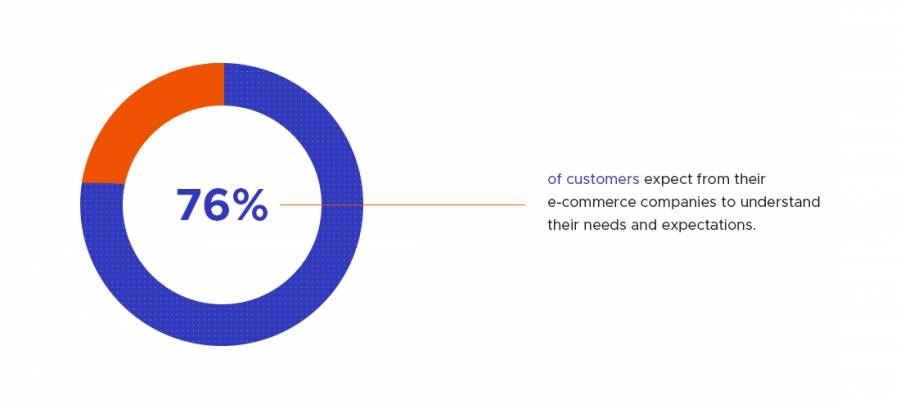
This is the key reason why retailers across the globe are investing in online and digital methods to enhance customer engagement. Many are looking for providing integrated shopping experiences.
When a customer purchases something, he makes contact with several touch points. Keeping this in mind, merchants prefer providing an integrated customer experience which means retailers must holistically plan, devise, and execute across multiple channels, irrespective of whether the sale occurs in-store or through the online store.
Key Takeaways for Merchants:
- Providing Omnichannel Marketing
Omnichannel Marketing is a strategic approach under which all the physical and digital channels are connected with one another providing cohesive user experience. The goal is to provide customers with an integrated approach with an anywhere shopping experience. Major brands like Disney, Bank of America, etc. are using Omnichannel marketing.
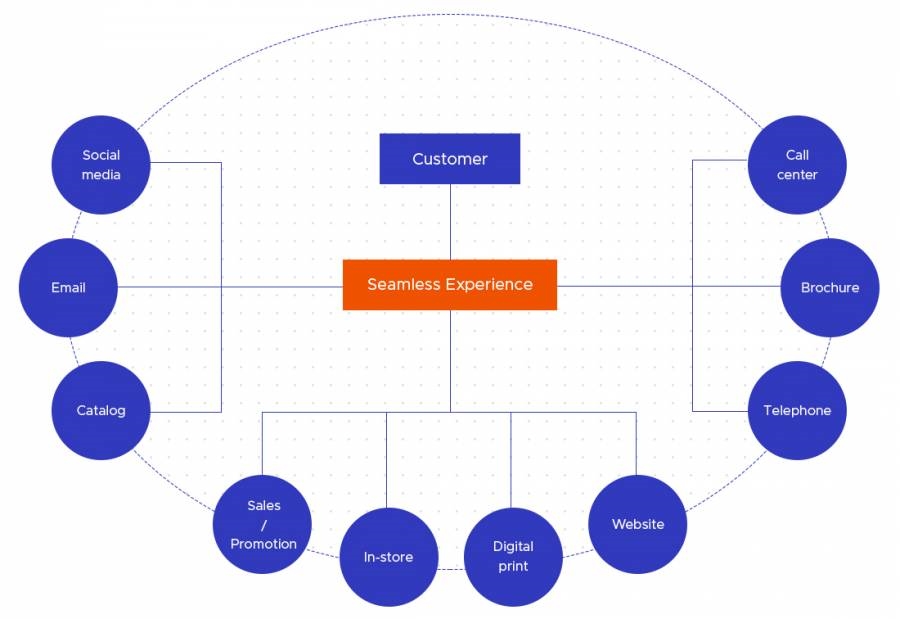
Many strategies increase conversions; a few essential ways are:
- Offering discounts and coupon vouchers
- Creating user responsive pages
- Sharing user-generated content
- Form relationships with customers with a customer-centric view
- Optimizing mobile experience
- Integrating social media channels
Providing omnichannel experience to customers help merchants improve customer loyalty, customer satisfaction, and customer lifetime value.
4. M-Commerce
With the increasing popularity of smartphones, the number of users is expected to grow over 4.78 billion by 2020, adding to the surge of e-commerce continually.
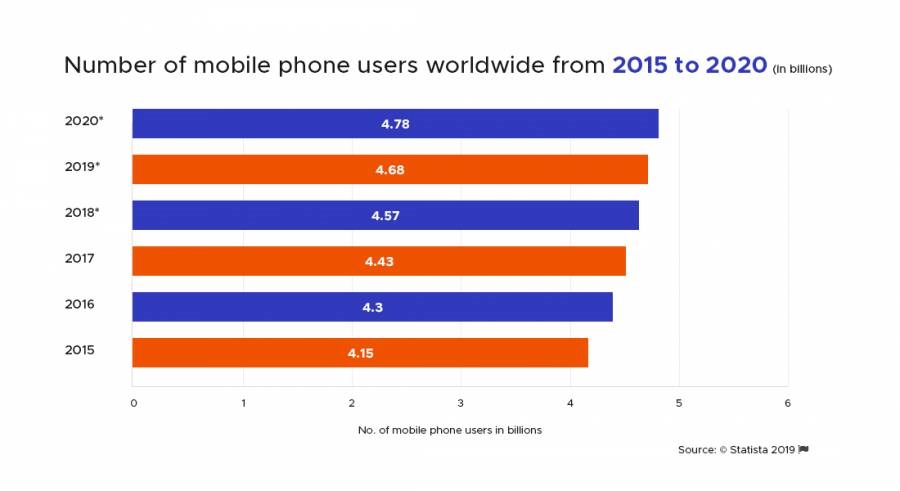
Source: Statista
Such a massive increase in the number of mobile phones, merchants are shifting their gears towards advanced techniques like Accelerated Mobile Pages, Progressive Web Applications, and more.
Key Takeaways for Merchants:
- Using Mobile Predictive technologies
Retailers are employing analytics tools and predictive technologies to personalize their content. This helps merchants to gather data and translate them into a meaningful context for delivering a tailored customer experience to their website visitors. Using predictive technologies can help you improve your business intelligence, reduce fraudulent activities, practice price management, target promotions and in many such measures.
An ecommerce business that utilizes predictive analytics has better chances of converting a prospect into a repeat buyer. Many tools such as Lattice, SAS, Alteryx are available that can help to track and understand customer’s behavior and intent in the right way.
These tools offer meaningful insights that can help you optimize your e-business processes. So, this way you can formulate a strategy to work towards removing bottlenecks in a longer run.
These intuitive tools can normalize the data from multiple data sources to an extent where you can predict the intent for the customer; they also provide an estimation for the total number of sales that you can expect in the upcoming season at a product level.
Another way is to use a product research tool which helps you measure accurate data for the monthly sales and estimated monthly revenue. You can track the product movement in real-time.
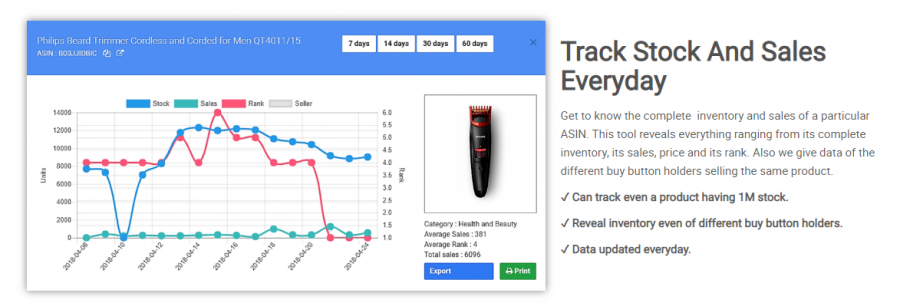
- Use Progressive web applications (PWA)
PWA, a new software development technology, is the future of e-commerce. It offers customers a fast app-like browsing experience by combining the functionality of a regular web page and the mobile applications that increase the customer experience of an app with the accessibility of visiting a website. Many popular ecommerce platforms are implementing this technique to let merchants empower their e-commerce stores. For instance, the Magento 2.3 update launched a PWA studio which provided merchants with tools to personalize their content, add local preferences, and provide the consistent user experience.
Progressive Web App technology converts mobile shopping into an engaging and lightning fast experience.
- Using Accelerated Mobile Pages
Accelerated Mobile Pages (AMP) helps you provide quality content to users and a mobile web experience which is faster and better than the regular mobile apps. A lightning-bolt symbol represents websites using the accelerated mobile page technology before their URLs. For instance, SEMRush is using AMP-immersive technology for its blog pages to provide a better user experience.

Though initially this technology was built for blogging websites, later its functionality was extended to e-commerce space where low page speeds were a major issue. Faster user experience in e-commerce websites ensures reduced bounce rate, faster conversions, search engine visibility, and boosted ROI.
So, implementing accelerated mobile pages to the homepage, product pages, and product category pages allows e-commerce merchants to maximize their sales, improve average order value, and maintain flexibility and control. Considering its myriad advantages, different brands are today shifting their gears towards their AMP-lification of their e-commerce businesses.
For example, the largest online fashion retailer in India, Myntra implemented AMP technology in about 11 days wherein they covered all of their essential landing pages from Google and the individual product pages by implementing PWA technology to derive better performance from those pages as well. As a result, the brand observed that the page load time was lowered by 65% as well as the bounce rate was reduced by 40%. So, there was an overall improvement in e-commerce results.
- Using Near Field Communication (NFC)
NFC is a class of communication protocols that allows two electronic devices to set up communication by bringing one device within the vicinity of 3-4 cm from each other. In this contactless radio technology, one device is portable (mobile phone), and the other is a fixed terminal. E-commerce is one of the popular applications that are supported by NFC technology.
Consumers can pay for items by tapping an NFC chip against an NFC terminal. Thus, technology not only saves customers’ time but also provides safety to user privacy. For instance, customers can use their NFC enabled mobile phone device against a reader to pay for a make a purchase.
5. Augmented Reality E-commerce
How is it possible that Pokemon Go does not come across our minds while talking about the Augmented Reality? When extended to use in the e-commerce industry, it is known as Augmented Reality E-commerce. Where installing AR apps allow customers to have an immersive experience while shopping, it will enable merchants to have an increased conversion rate. Augmented Reality bridges the gap between an in-store shopping experience and a mobile shopping experience.
Key Takeaways for merchants:
- Provide Product Visualization before buying
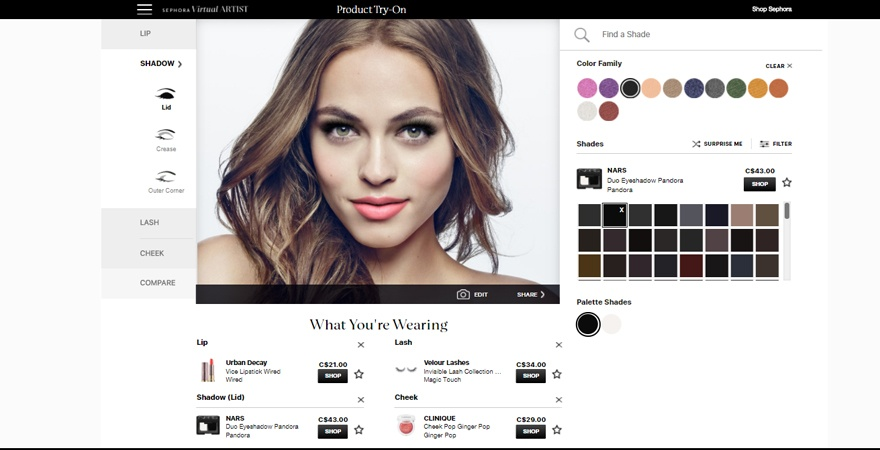
Merchants use Augmented Reality to imitate real in-store experiences. For instance, Sephora‘s Virtual Artist is an Augmented reality-based app. These apps allow users to see what type of product will look good on them. It will enable you to try different makeup products like lip colors, eyelashes, and more. Apps like these create an exciting experience for women as they can ‘try-on’ everything.
Similarly, websites like IKEA helps its customers virtually view what kind of furniture will look better in their home. This type of application attracts more users, and it is likely to increase conversions. From the user’s perspective, it offers a rich online shopping experience.
- Providing Body Measurement Solutions
The Body Measurement App is a revolutionary way to measure the most accurate virtual fitting of the user’s body. AR app is a perfect solution to fitting problems that arise while buying wearables online. Users can try a product as per their measurements that accurately fits before buying.
- Virtual Product Aisles
Instead of in-store shelves, the surge in AR technology has led shoppers to view and buy from neat virtual shelves. E-commerce retailers are now using AR-based mobile applications to build product aisles showcasing a variety of products. These product aisles are the virtual simulations that can be projected on the walls of a customer’s living room. Customers can click on the products to grab more information about them and purchase them.
6. Artificial Intelligence and Machine Learning
Machine learning is a part of artificial intelligence (AI) that provides an ecommerce system with an ability to automatically learn and improve from customers’ experience without the need of being programmed. With Artificial Intelligence gaining momentum in the ecommerce sphere, the merchants use it in many applications to provide better services and improve their customer base.
Key Takeaways for merchants:
- Providing Personalized experiences via a recommendation engine
E-retailers today are deploying the machine learning algorithms for offering their customers the personalized experiences. For example, implementing Machine Learning algorithms in your e-commerce stores can help you display recommended products based on recent product search history either on the product page or the checkout page.
- Visual Search instead of Keyword Planning
Artificial Intelligence technology is helping marketers to implement the visual discovery of the products. This technology is replacing the use of keyword planners. Currently, the best examples are Google Lens and Pinterest Lens. Users need to hold their camera lens focussing on the specific item, and the algorithm works itself to find that product on the web. Implementing these artificial intelligence based visual search helps merchants to provide ease to their users. So, your products have to be optimized to rank in those listings to increase the chances of reaching to a greater audience and convert sales.
- ChatBot Assistance
With artificial intelligence, it is easy to provide chat bot assistance as customer support at any time. eCommerce brands are offering chat bots asking about the needs of their customers and how they can help. The chatbots implement machine learning algorithms to interact with human users. Using chatbot, you can minimize your support team effort where the bot can answer the frequently asked questions and be available 24 hrs taking up the query and providing answers to the customers in real-time. Advanced bots can also negotiate the pricing and win sales over competitors based on user intent and the minimum selling price you set for a particular product or service.
- Assisting Marketers to strategize their campaigns
Marketers can analyze neural networks to understand customer behavior and predict market trends. It helps to plan what should be eliminated from the organic and paid PPC campaign. This way you can run more targeted campaigns Devising neural marketing strategies can help marketers gain the return on investment by formulating targeted campaigns for various customer segments campaigns.
Final Thoughts On Changing E-commerce Landscape
In today’s uber-competitive e-commerce environment, companies seek to attract customers through a radical approach by providing highly-engaging and meaningful user experiences. With the technological advancements, the upcoming years will experience changing e-commerce landscape more than ever. The modern techniques blending with eCommerce sphere is providing an exponential hike in sales and customer satisfaction. With technologies like Augmented reality, merchants have been able to give the best visual shopping experience at the convenience of their homes.
Moreover, with the newer wireless technology trends such as 5G, it is guaranteed to provide greater speeds approximately 10 times the 4G, with high throughput and almost 0 latency. With the launch of 5G, the number of AR and VR based consumer applications will be more commonly seen in the future.
The artificial intelligence learning capabilities will also be improved with the deployment of 5G. Indeed, there will be better personalization, high speed and accessibility of the Internet.
Let’s see how 5G will widen the e-commerce horizon for merchants. Which e-commerce technology do you like the most? Do share your views.
The post Changing E-commerce Landscape: Global Trends for 2019 and Beyond appeared first on ReadWrite.
(68)

